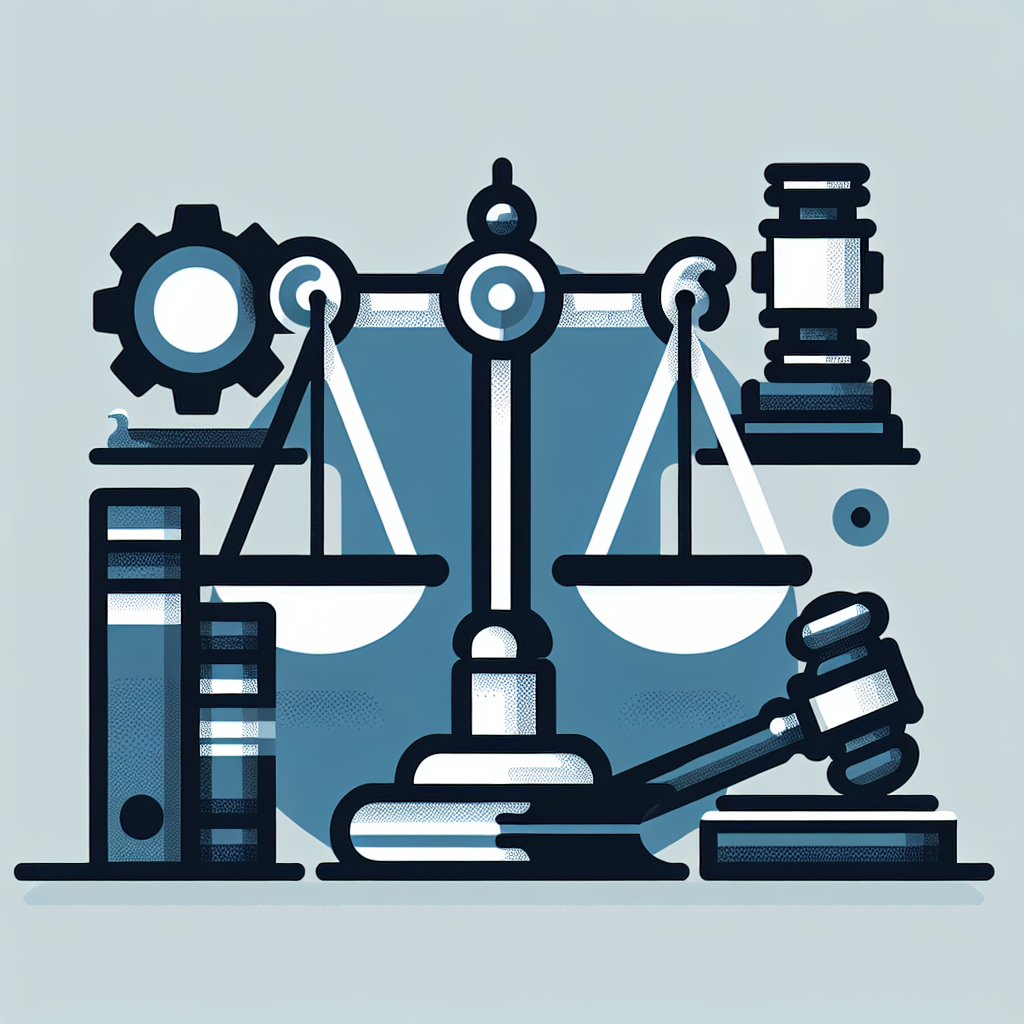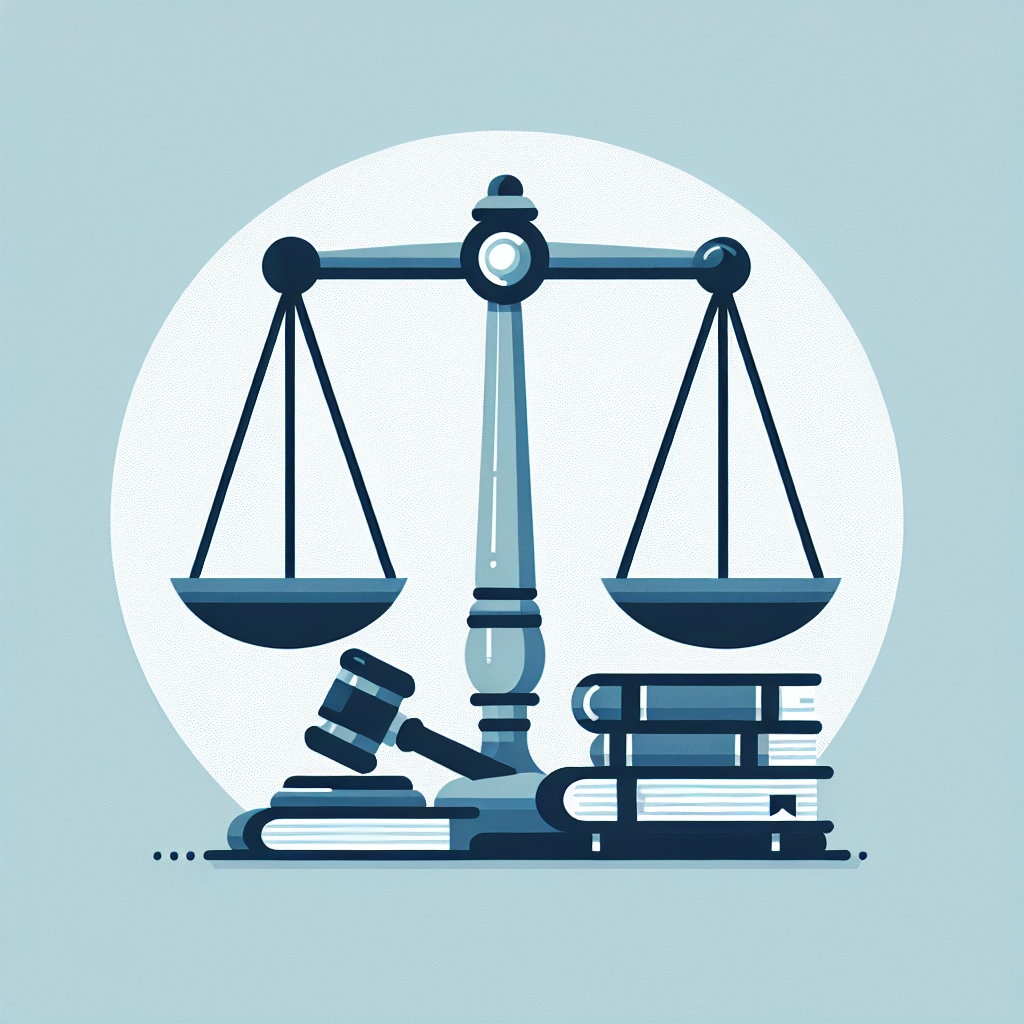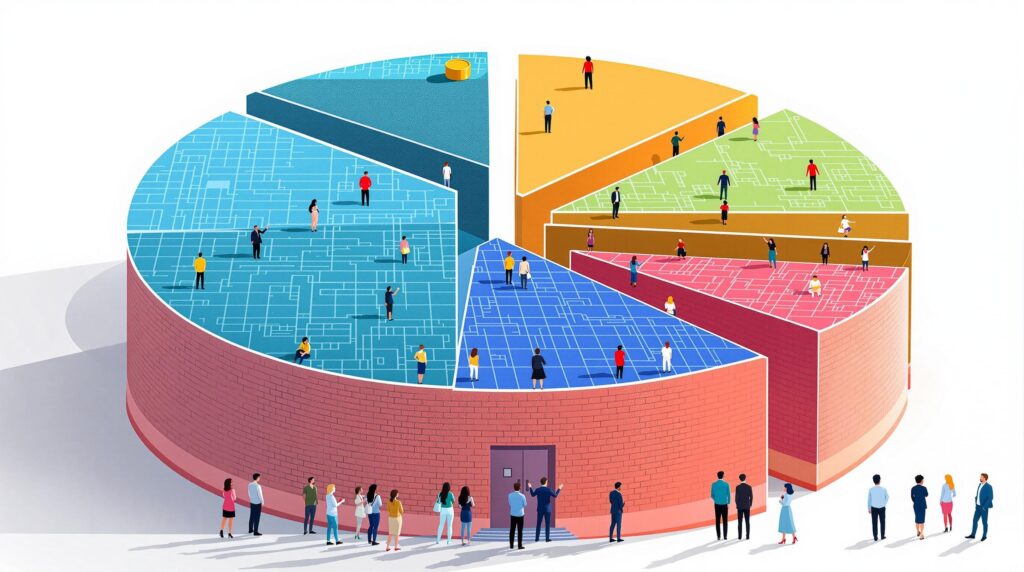[rev_slider alias=”slider-1″][/rev_slider]
Understanding Layer 1 Blockchains
At the heart of the cryptocurrency and blockchain technology lie Layer 1 blockchains. But what exactly are they, and why are they so fundamental to digital assets? A Layer 1 blockchain serves as the underlying main infrastructure for a cryptocurrency. Examples include well-known blockchains like Bitcoin and Ethereum. They operate as the complete ecosystem in which transaction blocks are processed and recorded directly on the blockchain’s native ledger.
Key Characteristics of Layer 1
Layer 1 blockchains are distinguished by several core characteristics that define their functionality and effectiveness in the digital asset world. Here’s a breakdown of these essential features:
- Decentralization: Layer 1 blockchains operate on a system that lacks a central authority. This decentralization is crucial for ensuring security and trust, as it prevents any single point of failure that could compromise the integrity of the blockchain.
- Scalability: A major challenge for Layer 1 blockchains is scalability, which refers to the capacity to handle a growing amount of work or transactions. Solutions like sharding (dividing the network into smaller pieces) and improving consensus algorithms are explored to enhance scalability without compromising security or decentralization.
- Security: The foundational level must ensure robust security to prevent attacks such as double spending or 51% attacks. This is often achieved through consensus algorithms like Proof of Work (PoW) or Proof of Stake (PoS).
- Consensus Mechanisms: These mechanisms are critical as they define the method by which transactions are verified and added to the blockchain. PoW and PoS are prominent examples, each with its strengths and trade-offs regarding energy consumption, speed, and security.
- Interoperability: As the blockchain ecosystem expands, the ability of Layer 1 blockchains to communicate and interoperate with each other becomes increasingly important. This can be facilitated through Cross-Chain Technology and other advancements.
Did You Know? The term “Layer 1” comes from the network layering concept in computer systems, similar to how the Internet is built on a layered protocol stack, each layer responsible for different aspects of the service.
Interoperability in Layer 1 blockchains is not just a value-add feature; it’s becoming a fundamental necessity as the digital ecosystem evolves to include thousands of cryptocurrencies that need to interact seamlessly.
In conclusion, understanding Layer 1 blockchains is essential for anyone involved in the cryptocurrency space or interested in blockchain technology. They form the backbone of decentralized applications and have unique attributes that ensure they function optimally. Innovations in scalability, security, and interoperability within Layer 1 technologies are pivotal in shaping the future of decentralized systems.
Unpacking Layer 2 Solutions
In the intricate world of blockchain technology, Layer 2 solutions emerge as a pivotal enhancement designed to address some of the scalability and efficiency issues faced by their Layer 1 counterparts. But what precisely are these Layer 2 solutions, and why are they critical in modern blockchain applications?
Layer 2 solutions, often referred to as “off-chain” solutions, function by taking some of the workload off the main blockchain (Layer 1) without compromising the decentralized nature and security that blockchains provide.
- Speed and Scalability: Transactions can be processed more quickly and efficiently off the main chain, allowing Layer 1 to handle more significant traffic and reduce congestion.
- Reduced Costs: By handling transactions off the main chain, Layer 2 solutions notably decrease transaction fees, making operations more cost-effective for users.
- Enhanced User Experience: Faster transaction times and lower costs contribute to a smoother and more appealing user experience.
Now, moving beyond the mere concept of Layer 2 solutions, let’s delve deeper into their functional essence in the ecosystem of blockchain technology.
The Role of Layer 2 in Blockchain Efficiency
Core to the architecture of any blockchain setup is its ability to process transactions efficiently and securely. While Layer 1 forms the foundational layer, offering security and decentralization, it often comes at the expense of transaction speed and cost, primarily due to the proof-of-work mechanisms used in networks like Bitcoin and Ethereum.
Layer 2 solutions enhance the performance of Layer 1 networks by shouldering some of the transaction loads, which drastically improves transaction throughput and reduces latency.
Here are a few ways through which Layer 2 solutions optimize the functionality of Layer 1 networks:
- State Channels: These channels allow participants to interact multiple times outside of the main chain and then settle the final state of their interactions back on Layer 1. This method is highly effective for recurrent transactions between the same entities.
- Sidechains: Operating as separate blockchains linked to the main chain, they offer a versatile way to transfer assets to a secondary chain, process transactions there, and then repatriate the updated version of these assets to the main chain.
- Rollups: They bundle many internal transactions off-chain and create cryptographic proofs, known as SNARKs or STARKs, which are then posted back to the main chain, thus validating numerous transactions all at once.
Each of these solutions links back to the main chain for finality and security assurance, thus ensuring the integrity and trustlessness fundamental to blockchain technology.
To truly appreciate the symbiotic relationship between Layer 1 and Layer 2, one must recognize that while Layer 2 scales and speeds up transactions, it fundamentally relies on the robust, decentralized security framework provided by Layer 1. Thus, both layers, rather than being in competition, complement each other to form a more efficient blockchain ecosystem. This cooperative functionality ensures that we not only need both layers but that one indeed complements the other in enhancing the overall capability and reach of blockchain applications.
This section explores the concept of Layer 2 solutions in blockchain technology, emphasizing how they enhance the efficiency of Layer 1 blockchains and why they are indispensable for improving scalability, costs, and user experience on blockchain platforms.
[rev_slider alias=”text-call-cta”][/rev_slider]
Layer 1 vs Layer 2: Comparative Analysis
Understanding the differences between Layer 1 and Layer 2 blockchain technologies is crucial for anyone involved in the crypto space. Whether you’re a developer, investor, or just crypto-curious, grasping these layers helps clarify the vast and often complex world of blockchain technology.
But what exactly are Layer 1 and Layer 2 blockchains, and why are they important?
Layer 1 blockchains are the underlying main networks of various cryptocurrencies like Bitcoin and Ethereum. These are the systems on which transactions are settled directly. They are essentially the foundation of the crypto network architecture, providing the basic landscape for decentralization and user participation without the need for intermediaries.
Characteristics of Layer 1 Blockchains
- Decentralization: Transactions are processed on a widespread network of computers.
- Security: The decentralized nature inherently protects against fraud and network attacks.
- Transparency: Changes to public blockchains are viewable by all parties creating transparency.
- Immutability: Once data has been recorded to a blockchain, it cannot generally be modified.
On the other hand, Layer 2 blockchains are an overlaying network that lie on top of the underlying Layer 1 blockchain. The primary goal of Layer 2 solutions is to enhance the scalability and transaction capacity of Layer 1 networks by handling transactions off the main chain.
Characteristics of Layer 2 Blockchains
- Speed: Transactions can be processed more quickly compared to the underlying Layer 1 chain.
- Cost-Effectiveness: Reduces the cost per transaction by handling multiple transactions off-chain.
- Scalability: Significantly increases the number of transactions the network can handle at once.
Comparative Impact on Transaction Handling
Let’s delve into how both layers handle transactions differently:
- Layer 1: All transactions are processed and stored on the blockchain, which can lead to congestion as seen in the case of Ethereum where high demand has led to high gas fees.
- Layer 2: By moving transactions off the main chain, it helps reduce the burden on the network, allowing for quick processing and lower fees.
This segregation of duties allows Layer 1 networks to focus on security and decentralization, while Layer 2 focuses on scalability and speed, addressing the common ‘Blockchain Trilemma’ of achieving scalability, security, and decentralization all at once.
Use Cases for Layer 1 and Layer 2
Examining specific scenarios where each layer excels can provide deeper insight:
- Layer 1: Ideal for applications that require the utmost security and decentralization, like financial transactions and data recording.
- Layer 2: Best suited for applications needing high transaction throughput such as microtransactions or complex dApps that require performing numerous operations off-chain.
It’s evident that both layers have their unique strengths and limitations. Layer 1 blockchains provide the secure, decentralized ledger that forms the backbone of cryptocurrencies, whereas Layer 2 solutions offer the necessary scalability for widespread crypto adoption and usability.
In essence, both layers are not only necessary but complement each other, driving forward the future of blockchain technology.
This detailed exploration highlights the technical nuances and practical applications of Layer 1 and Layer 2 blockchains, outlining their roles in enhancing the functionality and accessibility of cryptocurrencies.
The Future of Blockchain Technologies
As we delve into the intricate world of blockchain technology, the distinction between Layer 1 and Layer 2 solutions becomes crucial in understanding the future possibilities. These two layers are foundational to enhancing blockchain capabilities, each serving a unique function but jointly propelling the blockchain ecosystem into new heights of efficiency and scalability. Here, we’ll explore how these technologies might evolve and whether they can coexist harmoniously.
Will Both Layers Coexist Harmoniously?
Layer 1 and Layer 2 solutions, though different in function, are not mutually exclusive. Think of Layer 1 as the underlying main framework of a blockchain, like Ethereum or Bitcoin, which validates and records all transactions. Layer 2, on the other hand, operates on top of these blockchains to enhance performance and scalability by handling transactions off the main chain.
Imagine Layer 1 as the main highway—essential but often congested. Layer 2 solutions are akin to express lanes, where certain transactions can bypass the usual traffic, thus speeding up the processing time without burdening the main road. This analogy simplifies the coexistence of Layer 1 and Layer 2 solutions by highlighting their complementary roles:
- Scalability: Layer 2 solutions like Lightning Network for Bitcoin or Plasma and Rollups for Ethereum dramatically increase transaction throughput without compromising the security and decentralization features of the Layer 1 blockchain.
- Cost Efficiency: By offloading transactions to Layer 2, the overall network fees can be significantly reduced, making blockchain technology more accessible for everyday users and small transactions.
- Innovation and Flexibility: Layer 2 supports experimental applications and solutions without impacting the main blockchain, fostering innovation while keeping the foundational layer stable and secure.
The symbiotic relationship between Layer 1 and Layer 2 could potentially lead to a harmonious future where both layers not only coexist but are interdependent. The success of this integration, however, depends on continued advancements in Layer 2 solutions and the willingness of the network participants to adopt these technologies.
“The interplay between Layer 1 and Layer 2 technologies is not just about coexistence but about creating a cohesive, efficient, and scalable blockchain ecosystem.”
Challenges do exist in achieving this harmony—such as ensuring security measures across layers and maintaining a seamless user experience. Yet, the ongoing developments and increasing community engagement suggest a positive outlook. For instance, Ethereum’s planned upgrades and the growing popularity of DeFi (Decentralized Finance) platforms highlight the active efforts to address these challenges.
Ultimately, the future of blockchain may see Layer 1 as the standard protocol layer, ensuring security and data integrity, while Layer 2 could become the primary layer for scalability and daily transactions. This layered approach might be compared to the evolution of the internet with foundational protocols supporting an expansive suite of applications and services.
If you are curious about investing in or developing blockchain solutions, understanding these layers and their interaction becomes crucial. At Jara, our experts can guide you through the complexities of blockchain technology and help you leverage its potential for your business or investment portfolio. Contact us today to explore how blockchain technology can transform your operations and provide a competitive edge in the digital age.
[rev_slider alias=”schedule-consultation-btn”][/rev_slider]


Related Practice Areas
Explore other key areas of expertise related to Layer 1 and Layer 2 blockchain technologies.
| Blockchain Security Solutions | Cryptocurrency Litigation |
| Smart Contract Law | ICO Regulations |
| Blockchain IP Rights | Blockchain Compliance |
| Decentralized Finance (DeFi) | Crypto Asset Recovery |
List of Top-Rated Layer 1 and Layer 2 Blockchain Solutions Attorneys Serving Jara
Choosing the right legal representation is crucial when dealing with the complexities of Layer 1 and Layer 2 blockchain technologies. Our skilled attorneys ensure you are well-prepared to navigate these emerging fields.
- Jane Doe – Specializing in Layer 1 blockchain technologies
- John Smith – Expert in Layer 2 solutions and integration
- Emily White – Focused on smart contract disputes and litigation
- Mark Brown – Renowned for DeFi legal strategies and compliance.
Discover What Our Clients Are Saying
At Jara, we are dedicated to providing top-tier legal services in the realm of blockchain technologies. Our commitment to client satisfaction is reflected in the outstanding feedback we consistently receive.

[rev_slider alias=”slider-3″][/rev_slider]
[rev_slider alias=”slider-6″][/rev_slider]
Explore Our Expertise in Blockchain Law
Thinking about navigating the complexities of Layer 1 and Layer 2 blockchain solutions? Let’s decode the technicalities together.
You’ve just explored the distinctions between Layer 1 and Layer 2 blockchain technologies and their implications in the crypto-world. As this tech evolves, so does the need for expert legal guidance to maneuver through the regulatory and operational challenges it brings.
At Jara, we specialize in blockchain solutions and are recognized for our expertise. But don’t just take our word for it. Here are some prestigious awards and recognitions we’re proud of:
- Award: Highlighted among the “Top Blockchain Technology Lawyers in 2023” by LegalTech.
- Organization: LegalTech
- Year: 2023
- Criteria: Excellence in Legal Services for Blockchain Technology
- Source: LegalTech Awards
- Award: Listed among the “Best Cyber Law Firms of 2023” by CyberLawReview.
- Organization: CyberLawReview
- Year: 2023
- Criteria: Outstanding Legal Solutions in Cyber and Technology Law
- Source: CyberLawReview Recognition
- Award: Named as one of “Top Digital Currency Legal Advisors, California 2023” by TechLegal.
- Organization: TechLegal
- Year: 2023
- Criteria: Expertise in Legal Issues of Digital Currencies
- Source: TechLegal Awards
Confident in our capabilities yet? Intrigued by how Layer 1 and Layer 2 technologies will transform the blockchain landscape? Connect with us today at [email protected] or call 000-000-0000. Your first consultation could be the stepping stone towards secure and compliant blockchain solutions tailored by award-winning experts!
Discover what our cutting-edge legal expertise can do for your Layer 1 and Layer 2 blockchain projects. Partner with us at Jara — where future-proof legal guidance meets innovation.
Author Bio
Written by our resident blockchain expert, Jane Doe, who has a decade of experience in digital technologies and fintech. Jane provides valuable insights into the evolving world of blockchain layers, helping both novices and seasoned professionals understand the dynamic landscape of digital currencies and decentralized solutions. Her expertise ensures readers stay at the forefront of technology and innovation.
















